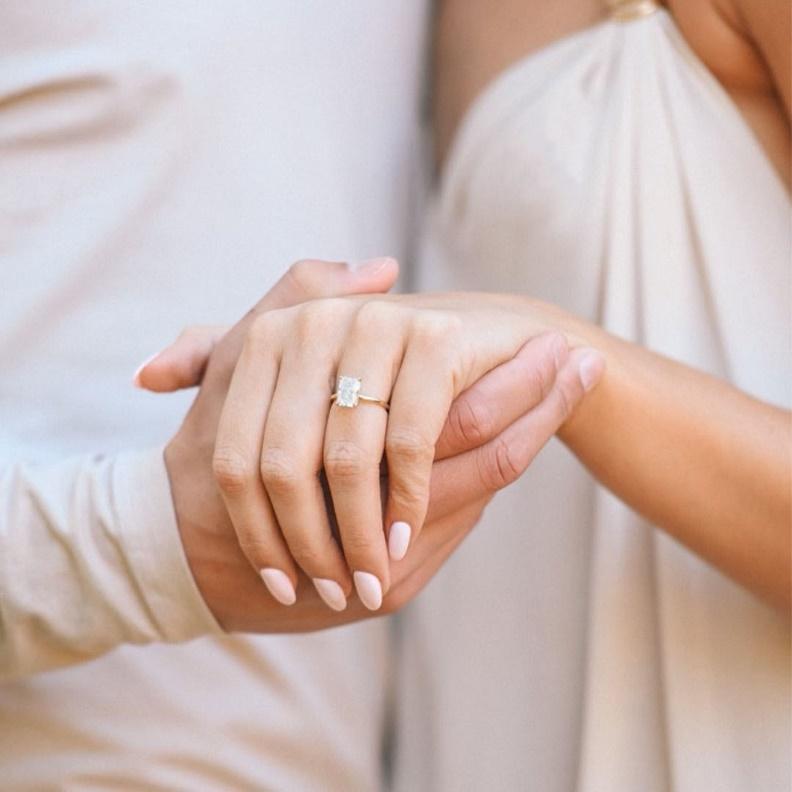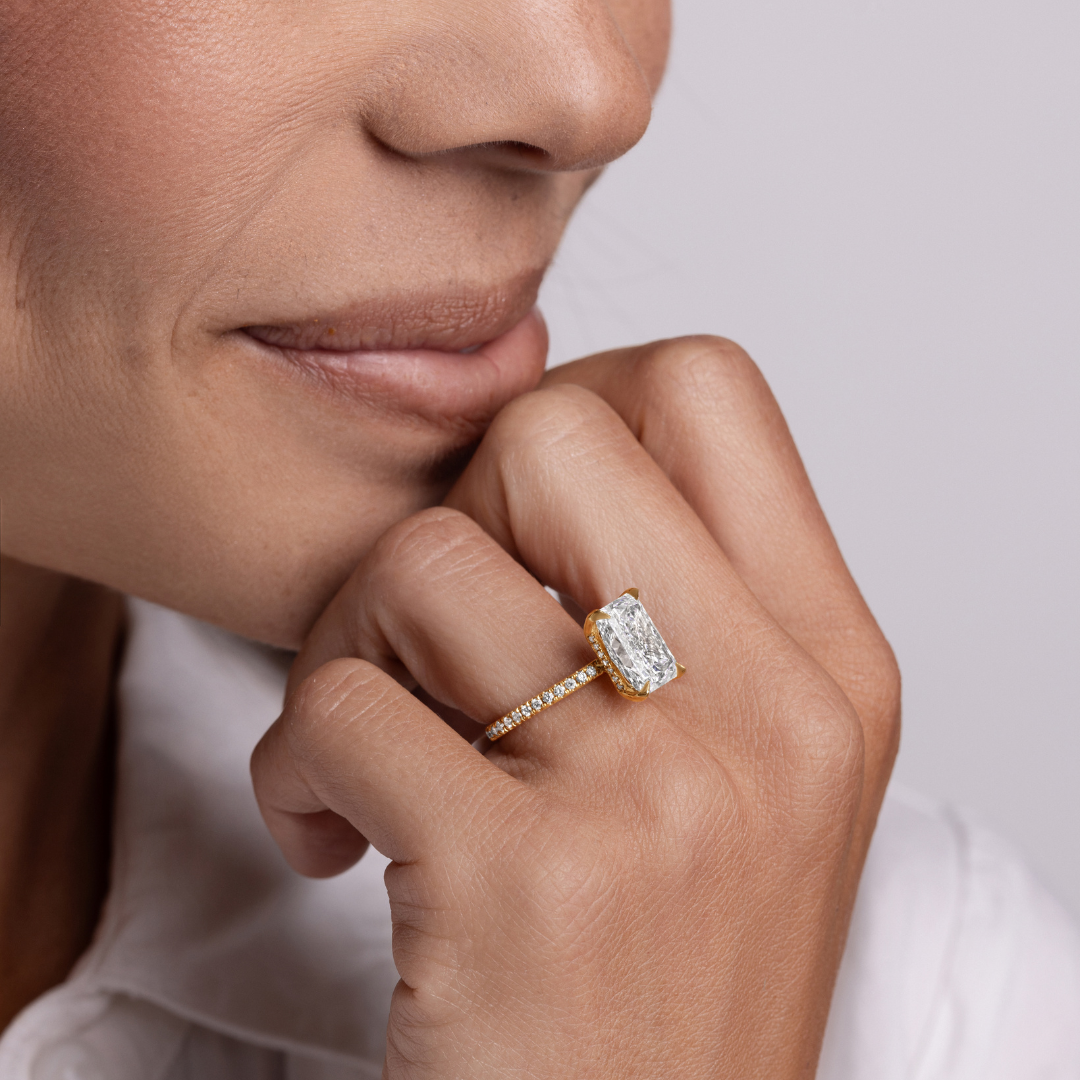When you get engaged it’s almost instinct to raise your left hand as your significant other pops the question. You watch as the ring slides onto the fourth finger of your left hand, better known as the “ring finger”. You’ve been eagerly awaiting this moment since you’ve found your person.
Particularly in the United States, it is natural to see wedding rings on the fourth finger of the left hand—the ring finger. But if you've ever wondered why that finger? Why the left hand? Some celebrities wear theirs on the right hand. Are they crazy or confused? Can I do that? Well, you're not the only one. Steeped in history, the wedding ring finger and hand have deep meanings that often change depending on the cultural traditions, the type of wedding ceremony, and the norms of a people or place.
Here's all you need to know.
A Rich History With Meaning
Wearing the wedding ring on the ring finger of the left hand has its foundation in a tradition and symbolism with roots found as far back as ancient times. Legend has it that the ring finger on the left hand has a vein with a direct connection to the heart.
The Romans of that time called it the vein of love or "Vena Amoris." They believed that wearing the ring on that specific finger solidifies the union among lovers and is a physical manifestation of two hearts connecting. What a romantic way to symbolize one's vows and devotions on such a lifeline.
However, as much as you may love this story, modern understanding of anatomy has revealed that all fingers have that venous connection to the heart. Even so, the tradition still holds to this day. Wearing the engagement and wedding ring on the left ring finger is still the most common way in a few cultures and locations like the US, Canada, Mexico, Italy, South America, and France.
Wedding Ring and the Right Hand
While the etiquette expert says that your wedding ring should be worn on the ring finger of your left hand, plenty of cultures think otherwise. Even though the early Romans believed in the "vein of love" legend, some among the same Romans viewed the left hand as a symbol of unreliability and untrustworthiness. Their preference was the right hand, as it was the symbol of honor and trust. Hence the wedding band on the right hand was a better choice.
Plenty of cultures and locations favor the wedding band on the right hand. In India, many view the left hand as impure; hence they have long-worn wedding rings on the right hand. Although this has changed in recent times, and whichever hand is anyone's choice—sometimes toes too.
Other Cultures and Their Ring Traditions
The Germans and Dutch wear their wedding rings on the right hand while keeping their engagement ring on the same hand. This signifies a transition from engaged to married. Among the Jews, the wedding band resides on the first finger of the right hand—the index finger—during the ceremony. It is later switched to the ring finger of the same hand.
The Turkish and Lebanese nationals wear the wedding ring on the ring finger of the right hand during the event. After which, the ring finds itself down the ring finger of the left hand. In Sri Lanka, things are a little different. Couples wear their ring on opposite hands. The groom is on the right hand, and the bride wears hers on the left hand.
Same-sex marriages have parts of their identity attached to which hand the ring rest on. To the rainbow community, the old phrase "Left is Right and Right is Wrong" is representative of why they use the right hand. It is also used to communicate to their partners their relationship position and status. Since the right hand, as they believe, represents a monogamous relationship, doing this tells their partner as much.
Left or Right? Why It Is Your Choice
Contrary to popular belief, there is no right or wrong way to wear your wedding ring.
Just as the world moved on from believing that the left-hand signified distrust and unreliability for matters like this, general opinions on why and where to wear wedding rings are ebbing away.
As societies evolve, this will continue.
Already, different countries and cultures have unique traditions and religious influences. These differences play a significant role in the choice of hands the wedding ring goes on within its people. In Hindu culture, there is reverence for the toe ring as the symbol of marriage. They believe it keeps the marriage vows strong and sacred.
Orthodox Christians wear their ring on the right hand. This is because the Latin meaning of the word "left" references impending evil and mystery. Protestant churches favor the left. This was, at first, a symbol of leaving Catholicism. Now, both religions favor whichever hand.
Out of respect for the culture of a location and its people, you may want to conform to their traditions. The truth is, disrespecting someone somewhere is inevitable, whichever way you go. Regardless of what the norm is, in the end, it is your wedding ring and your finger. What you do with it is up to you.
Today, there are far more people embracing individuality on the matter. They are finding unique ways to express what they feel towards their partners. Some couples even choose to wear their rings around their neck on a chain. This is especially true for couples with jobs that require them to use their hands more often.
A lot more couples prefer to stack the ring in colorful ways. This includes wearing the wedding ring along with the engagement ring and a promise ring. They fancy each ring on whatever finger or hand feels best, irrespective of the norm.
Some brides end up customizing the wedding ring so it fits with the others. They even go as far as soldering them together. For some, subsequent anniversary rings are attached as a renewal of their vows.
Ring stacking is a popular trend in this day and age. It not only looks great but also provides a slick way of putting those beautiful gems in the spotlight.
While sending the right message to your partner is important, and rightly so, who say you can't look gorgeous doing it?
At Happy Jewelers, we say, "Do whatever feels best," and we'll help you the rest of the way. There is no better way to begin forever than with the most trusted jewelers in the industry.






Share:
Which Comes First: The Engagement Ring or Wedding Band?
Five Questions to Ask Before You Buy an Eternity Ring